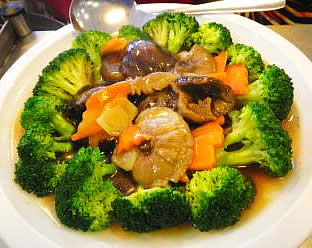 |
|
Meat-Eating and Global Warming
Extracts from an article written by Professor Ron Epstein
1) Basic facts about meat-eating and global warming
According to a 2006 United Nations report, the raising of livestock for meat consumption is directly responsible for 18 percent of global warming emissions. All the different forms of transportation combined—cars, trucks, trains, ships, and planes—only account for 13 percent. World-wide home and office emissions are only 8 percent.
The senior author of that U.N. report wrote, “The livestock sector accounts for 9 percent of CO2 deriving from human-related activities, but produces a much larger share of even more harmful greenhouse gases. It generates 65 percent of human-related nitrous oxide, which has 296 times the Global Warming Potential (GWP) of CO2…. And it accounts for respectively 37 percent of all human-induced methane (23 times as warming as CO2), which is largely produced by the digestive system of ruminants, and 64 percent of ammonia, which contributes significantly to acid rain.”
http://www.fao.org/newsroom/en/news/2006/1000448/index.html
The most emissions-intensive foods are red meat and dairy products. According to the World Watch Institute, world meat consumption has increased fivefold since 1950, and in the US it has doubled since 1950.
2) Basic facts about local livestock
There are over 17,000 livestock (cattle, bison, sheep and pigs) in Mendocino County. How many more automobiles on our roads would it take to equal the global warming effect of those 17,000 livestock? I don’t know, but it would be interesting to find out.
Since our climate does not permit year round grazing, most livestock are partially fed with hay grown on irrigated pasture that is trucked from elsewhere in California. And most of the non-local beef for sale here comes from cattle raised on irrigated pasture elsewhere in the state. Marc Reisner, author of Cadillac Desert, wrote in the New York Times: “In California, the single biggest consumer of water is…irrigated pasture: grass grown in a near-desert climate for cows. In 1986, irrigated pasture used about 5.3 million acre-feet of water — as much as all 27 million people in the state consumed, including for swimming pools and lawns…”
The Mendocino County EDFC and the local UC agricultural extension want to significantly increase the number of livestock in the county and to build a slaughterhouse and meat-packing facility to process them. Despite strict state guidelines against increasing greenhouse gas emissions mandated by AB 32, the California Global Warming Solutions Act of 2006, the county planners don’t think that the livestock that would be involved, including up to as many as 50,000 cattle, are worth taking into consideration in the new county master plan EIR.
3) What can we do?
According to geophysicists Gidon Eschel and Pamela Martin, “If every American reduced meat consumption by just 20%, the greenhouse gas savings would be the same as if we all switched from a normal sedan to a hybrid Prius.”
http://www.time.com/time/health/article/0,8599,1839995,00.html
Currently there are around ten million vegetarians in the United States, including many fewer vegans. Vegetarians, insofar as they eat dairy, are still contributing to global warming. If all three hundred million or so Americans cut their meat and dairy consumption 20%, that would be the equivalent of an additional 60 million people becoming vegan…
Obviously, if we want to make a serious dent in global warming, more attention should be devoted to getting people to cut their meat and dairy consumption…
…For instance, they can start with one or two meatless days a week. Or if people are already doing that, they can decrease their consumption a little bit more. Everyone can make the effort…
A very important first step in combating global warming right here in Mendocino County is making delicious and healthy vegan food easily available at reasonable prices. Doing our part to combat global warming doesn’t always have to mean making a lot of painful choices. It can be a taste treat.
https://www.sofarocean.com/posts/an-introduction-to-sea-surface-temperature


